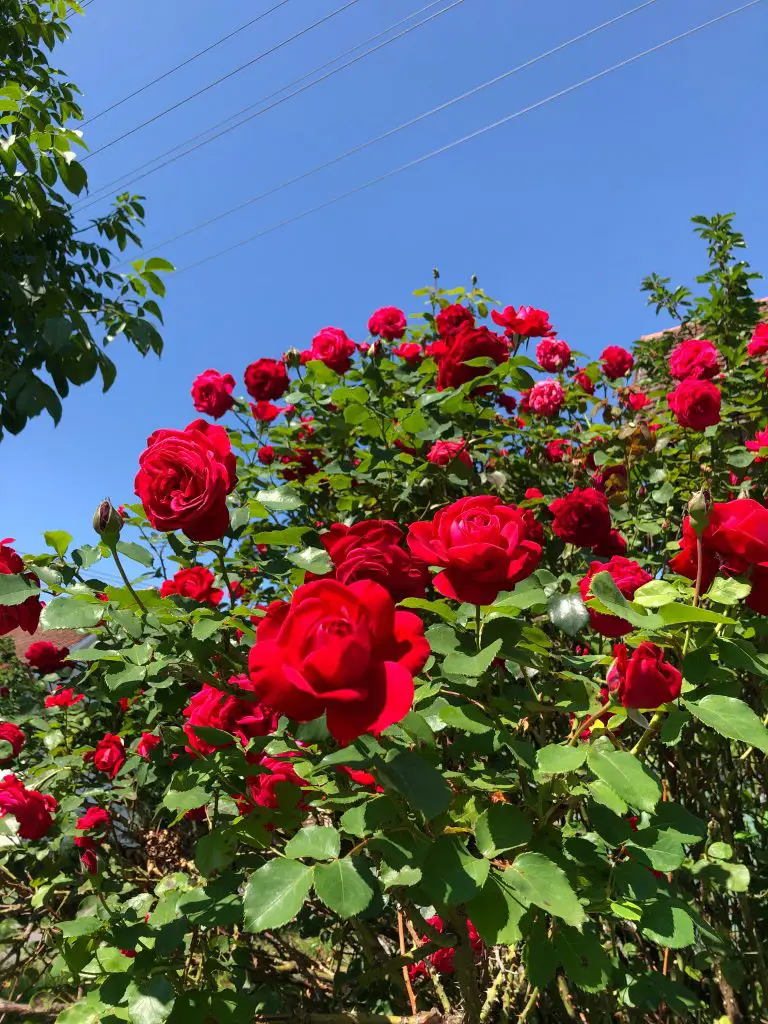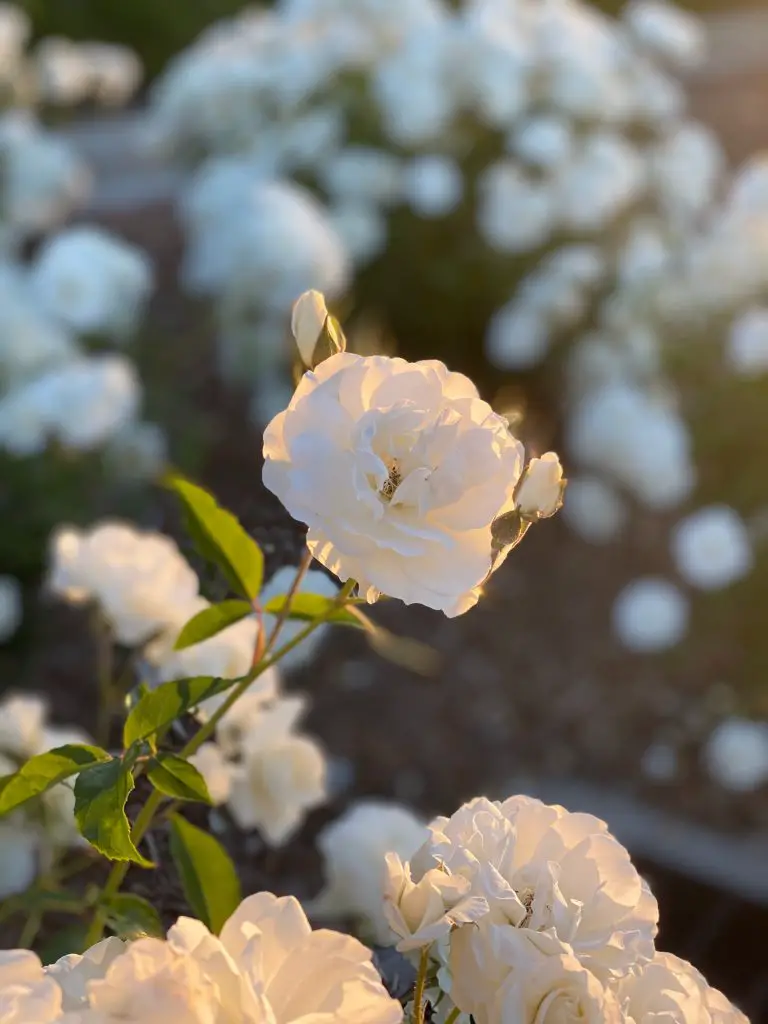Can A Rose Plant Survive Without Leaves? Roses are one of the most popular flowers to grow in gardens at home they are generally really tough plants that can tolerate a wide range of climatic conditions and general neglect. However, if the roses drop their leaves can they survive?
Roses can survive for a short period of time without leaves and do so every year when they go into dormancy throughout the winter. But, if the plant loses leaves for an extended period of time it will most certainly become damaged and then eventually die.
Whether rose plants can recover from a loss of foliage during the growing season is dependent upon identifying the reason for the foliage loss relatively quickly and remedied immediately. However, if corrective actions are not made quickly the plant will use its energy reserve to try and produce new foliage which will quickly exhaust the plant if the underlying causes have not been removed.

What Are The Most Common Causes Of Foliage Loss
There are typically 4 reasons why roses lose their leaves. The first reason is that the plant is going into dormancy during the winter period. This is an entirely normal occurrence and is not an indication of any underlying problem.
Foliage loss through dormancy typically occurs around mid to late autumn as the weather is cooling and continues until the end of winter. So you can typically expect to see foliage lost during winter for approximately 3 months of the year before new shoots will begin to reappear.
The second reason why roses will typically drop their leaves is a lack of moisture or too much moisture if there has been a series of extreme weather conditions such as flooding. Lack of moisture is typically characterized by the leaves beginning to curl inward and crinkling at the edges. Both of these signs are typical responses that roses will produce to reduce their loss of moisture by reducing the surface area of leaves.
This is generally easy to fix by increasing the level of watering and also mulching heavily around the plant to help retain moisture. Generally, this sort of problem only occurs when there is an extended period of extreme heat as roses are relatively drought-tolerant.
The third common problem that roses experience is disease which most commonly appears in the form of things such as black spot or leave scale. These types of diseases generally are fungal problems that often occur as a result of relatively high humidity.
The fourth common issue is a lack of a key nutrient within the soil which is sometimes also associated with a soil pH imbalance or a lack of moisture both of these factors will result in the plant being unable to access the nutrients that they need even if they are present in the soil. Nutrition imbalances in the soil is often short-term and not all that problematic but if left for an extended period of time it can result in leaf loss.

How To Maintain A Healthy Rose Bush
Much of the problems mentioned above can be remedied relatively easily provided that you follow a simple maintenance regime that will easily prevent most of the issues. The first major job of the season is typically done in late winter just before the weather is about to warm up. At this time of year, the rose should receive its major prune.
A significant prune at this time of year is extremely important because it will help to remove any diseased sections of the plants and provide a plant structure that reduces the chances of disease occurring in the subsequent season.
Most gardeners will remove approximately one-third to one-half of the plant during the spring which will set the plant up to produce a fantastic lot of flowers for the following season. To start this prune off the first step is to remove any dead or diseased limbs from the plant.
In addition to this, it is also important to remove any branches that are rubbing against each other as this creates an access point for disease and also any spindly growth that is relatively weak. As a general rule, we advise the removal any growth that is less than a pencil thick.
Once all the obvious branches are removed the next step is to consider the shape of the rose for the coming season. The pruning of the plant should be designed to increase access to sunlight and airflow by creating a goblet-shaped plant. This can be achieved by removing any inward-facing branches which will reduce airflow.

In addition to removing central branches, it is also important to consider the spacing between the remaining branches of the rose. If they are too close this will lead to problems later on so it is advisable to ensure that there are at least a few inches between every major limb.
Finally, when pruning the plant it is a good idea to reduce the height of the rows down to approximately 3ft or so. Do not be alarmed if you are taking large amounts of the plant as the rose will be much better for it. It is important because leaving the plants taller, particularly, if you have several roses in the same place will reduce the airflow through that patch increasing the chances of problems.
Once the pruning process is complete this is also the best time of year to rejuvenate the soil which can be done in several different ways. However, my preferred option is to sprinkle pelletized manure around the base of the rose though other types of specialized fertilizers will also do just fine.
The next step is to apply a thick layer of mulch. Ideally, the mulch selected should be organic as this will help to feed the soil. If you are using materials such as wood chips this will cause a temporary nitrogen deficiency in the soil as the wood chips break down. So if you have an immediate problem with the nutrition of your soil it is better to use something like compost as this will help to feed the soil immediately.
At this time of year, in most regions, watering will not be necessary as there is often adequate moisture from rainfall. However, as the season progresses into early summer it may be necessary to water the plant regularly, particularly on days when the temperature is high.

When watering the plants it is important to ensure that you water the base of the plant rather than wetting the leaves as this will increase the risk of fungal problems. If you have common problems with fungal diseases you may consider trying to apply a 50% milk solution as a preventative measure.
The solution should be applied on a weekly basis just as the foliage is beginning to appear rather than applying it once a problem appears as milk solution will help control the spread of the disease fungal but it will not kill it.
Finally, as the blooms appear on the plant is also a good idea to deadhead the plant and remove any spent flowers to encourage the plant to continue to produce blooms throughout the season. If you follow these simple directions you should be able to grow roses without problems in your garden every year.
I hope you found this article useful and have great success growing roses at home, if you have any additional comments or questions please leave them in the section below.
Relevant Articles
How Do You Make A Support For Sweet Peas?
Is Virginia Creeper The Same As Boston Ivy?
Why Is My Crocosmia Not Flowering? What Can I Do To Fix It?
What Is A Chinese Maple? How Does It Differ From Other Maple Trees?
